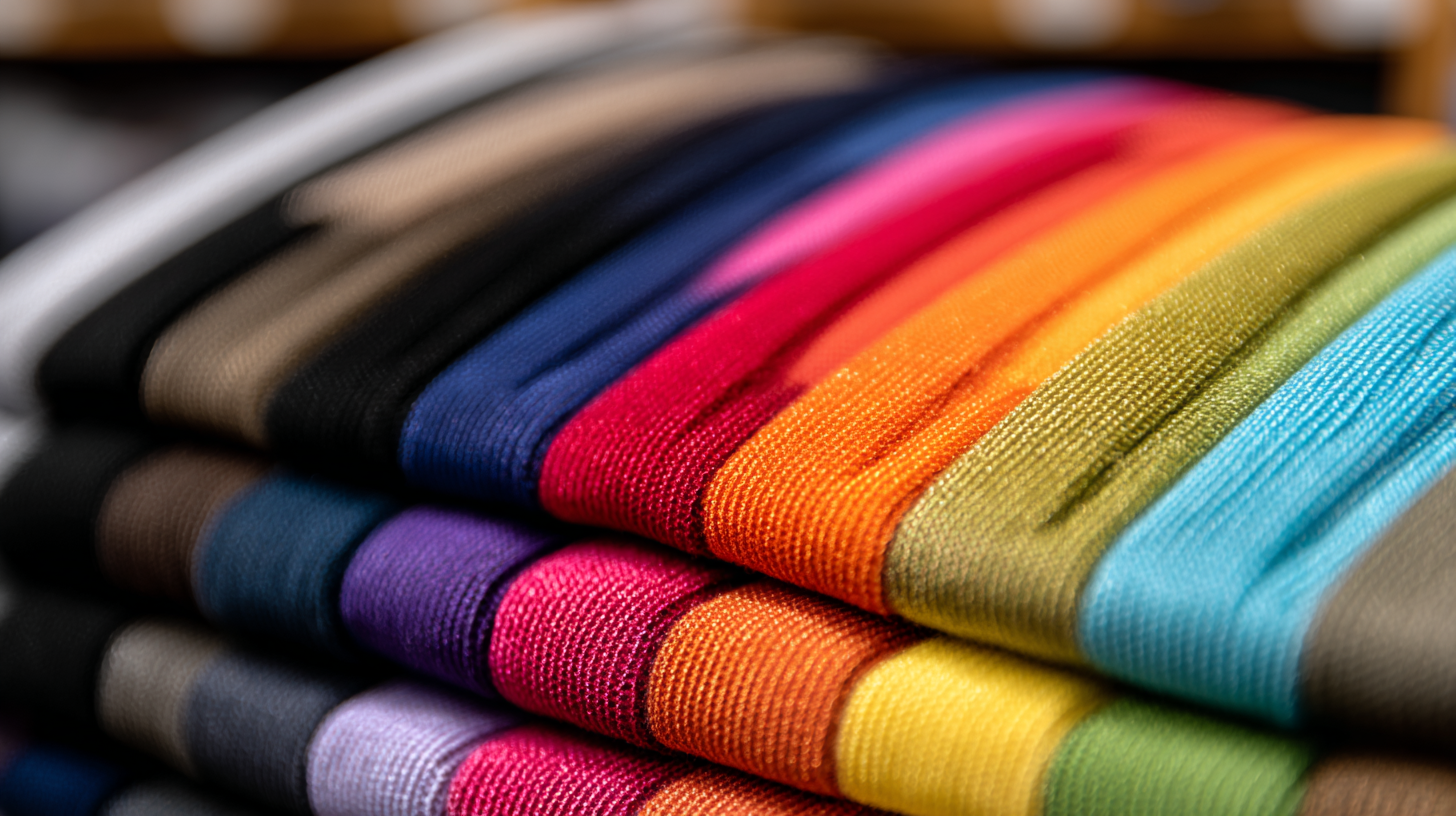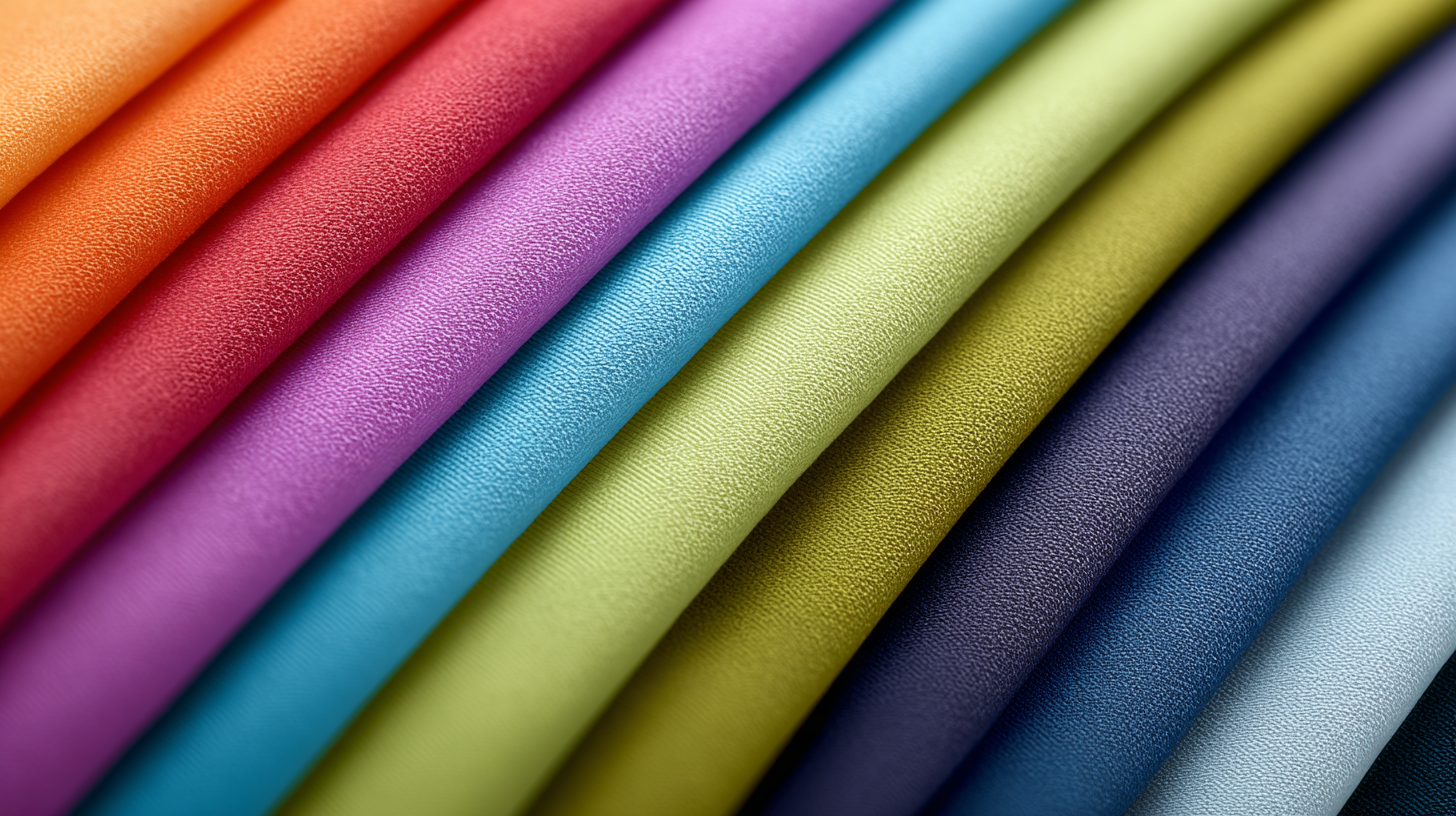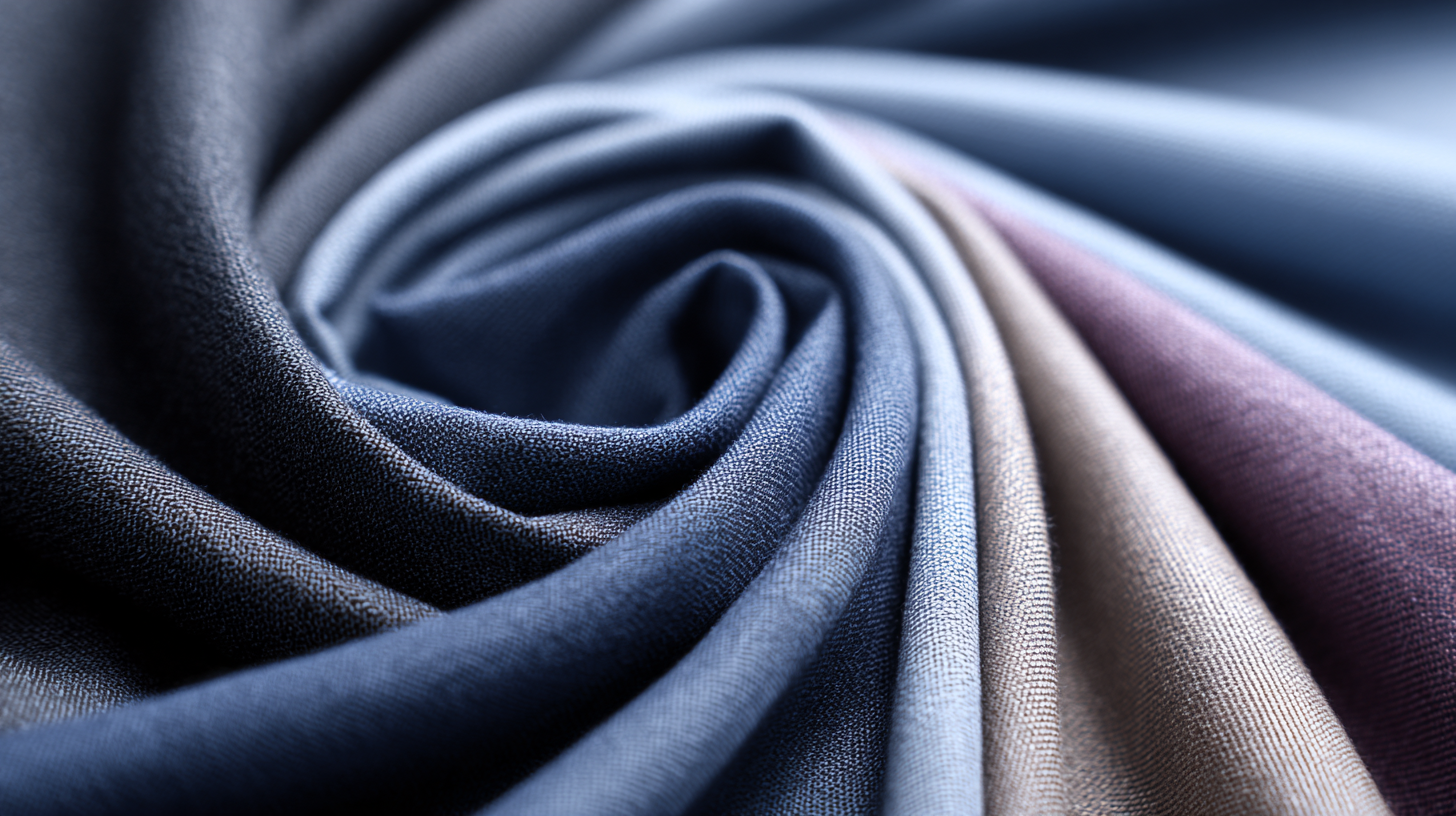Microfiber Spandex Fabric has rapidly gained popularity in various industries, from fashion to sportswear, due to its unique properties of stretchability, breathability, and durability. According to a report by Statista, the global market for spandex fiber is expected to reach approximately 6.5 billion U.S. dollars by 2025, driven by the increasing demand for high-performance textiles in clothing and athletic gear.

Additionally, the versatility of Microfiber Spandex Fabric allows for innovative applications, making it a favored choice among designers and manufacturers. When selecting the best Microfiber Spandex Fabric for your next project, it is crucial to consider factors such as fabric weight, stretch percentage, and moisture-wicking capabilities, as these elements can significantly affect the performance and comfort of the final product.
This guide will help you navigate through the options and make an informed decision that aligns with your project's specific needs.
Understanding the properties of microfiber spandex fabric is crucial for selecting the best materials for your projects. Microfiber spandex, known for its elasticity and softness, is often favored in sportswear and activewear due to its moisture-wicking capabilities and comfort. Recent studies highlight the environmental impact of microfiber shedding, especially during machine washing; textiles can contribute significantly to microplastic pollution. Reports indicate that woven fabrics tend to release more microfibers than their knitted counterparts, with a notable increase in emissions during pre-washing cycles.
Moreover, research focusing on elastane blended fabrics reveals that the amount of microfiber released varies significantly based on the fabric construction and composition. For instance, cotton/elastane knitted fabrics have been shown to have distinct microfiber release behaviors, emphasizing the importance of fabric choice not only for performance but also for environmental sustainability. As awareness of these impacts grows, it becomes imperative for manufacturers and consumers alike to consider how the characteristics of microfiber spandex can enhance both their projects and sustainably address textile waste concerns.

When selecting the ideal microfiber spandex fabric for your project, understanding the appropriate weight and thickness is crucial. According to a report by the Textile Research Journal, fabric weight directly influences both the drape and durability of the final product. Typically, microfiber spandex fabrics range from 140 grams per square meter (gsm) for lightweight applications such as activewear to over 250 gsm for more structured garments. This range allows for diverse uses, where lighter fabrics provide breathability and comfort, while heavier options offer support and longevity.
Thickness also plays a key role in achieving the desired performance characteristics of the fabric. The Fabric Development Association notes that the thickness of microfiber spandex can vary between 0.5 mm to 1.5 mm. Thinner fabrics are ideal for form-fitting designs, often utilized in dancewear and yoga apparel, where flexibility and stretch are paramount. On the other hand, thicker variants are more suited for items requiring more structure, such as shapewear. By knowing the right weight and thickness, designers can ensure their choice of microfiber spandex not only meets aesthetic guidelines but also enhances functional performance to meet the demands of modern consumers.
When selecting microfiber spandex fabric for your next project, exploring the wide array of colors and patterns is crucial to achieving the desired aesthetic and functionality. According to a report by the Fabric Association, color trends in fabric design have shifted towards vibrant hues and intricate patterns, reflecting modern consumer preferences that favor personalization and uniqueness. Data from recent surveys indicate that 63% of consumers prioritize color as a key factor in their fabric choices, demonstrating the importance of vibrant and diverse options in microfiber spandex.
In addition to color, patterns also play a significant role in the fabric selection process. The Microfiber and Spandex Fabric Market Report revealed that geometric and floral designs are among the most sought-after patterns, particularly in activewear and fashion apparel. These patterns not only enhance the visual appeal of garments but also cater to niche markets within the textile industry. As designers and consumers alike embrace bold prints and unique textures, selecting the right combination of color and pattern in microfiber spandex can elevate any project, making it stand out in a competitive marketplace.
| Color | Pattern | Weight (GSM) | Stretch (%) | Applications |
|---|---|---|---|---|
| Red | Solid | 180 | 40 | Activewear, Costumes |
| Blue | Tie-Dye | 200 | 50 | Dancewear, Swimwear |
| Black | Geometric | 220 | 40 | Yoga Pants, leggings |
| Green | Floral | 190 | 45 | Costumes, Activewear |
| Purple | Animal Print | 210 | 60 | Bikinis, Dancewear |
When selecting the best microfiber spandex fabric for your project, evaluating durability and stretch is crucial, especially if your fabric will be put to the test during wear or movement. Microfiber spandex is renowned for its ability to provide both comfort and flexibility, but not all options are created equally. Look for fabrics that boast a high thread count, as this typically signals a denser and more resilient material. Additionally, consider the weight of the fabric; heavier fabrics often offer increased durability, making them suitable for high-performance applications.
Tips: Always perform a stretch test on any fabric you consider. Gently pull a small section to ensure it can stretch without losing its original shape. Also, review the fabric's care instructions, as proper washing and maintenance can significantly extend its lifespan.
Another important factor is the blend ratio of microfiber to spandex. A higher percentage of spandex can enhance flexibility but may compromise durability if not balanced correctly. Aim for a microfiber spandex blend that retains optimal stretch while still providing the robust qualities needed for vigorous activities. This careful evaluation will ensure your fabric choice meets your project's specific performance requirements.

When selecting microfiber spandex fabric for your project, understanding the care instructions and maintenance is crucial for ensuring its longevity. Microfiber spandex is known for its soft texture and stretchability, but proper care is essential to retain these qualities. Most microfiber fabrics can be machine washed, but it’s important to avoid harsh detergents and bleach that could degrade the fibers. Washing in cold water on a gentle cycle helps preserve the fabric’s elasticity and prevents fading, ensuring that your project remains vibrant and functional over time.
Additionally, drying techniques play a significant role in maintaining the fabric’s integrity. It’s recommended to air dry microfiber spandex to avoid shrinkage and damage that can occur with high heat from dryers. If you must use a dryer, opt for a low heat setting and remove the fabric while it's still slightly damp. Moreover, regular maintenance, such as spot cleaning and gentle brushing, can help keep the fabric looking fresh and new. Being mindful of these care instructions will maximize the life of your microfiber spandex fabric, allowing you to enjoy your project for many years to come.






